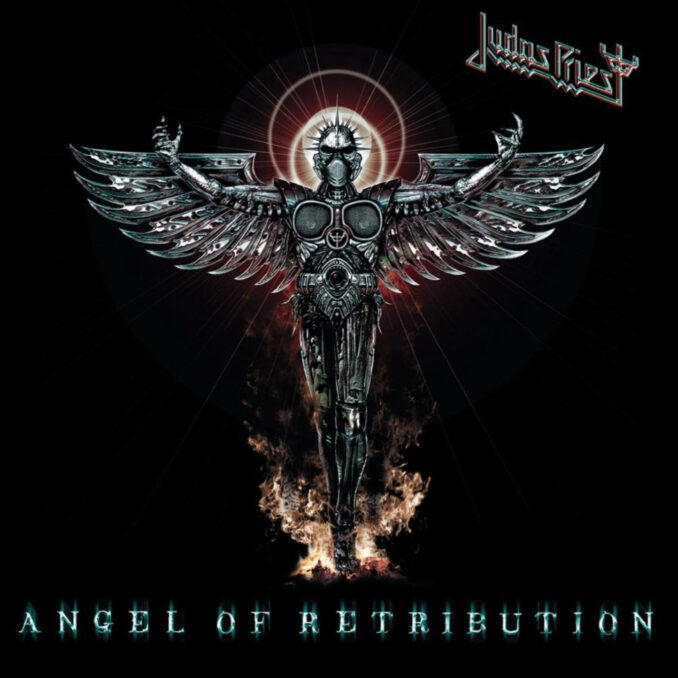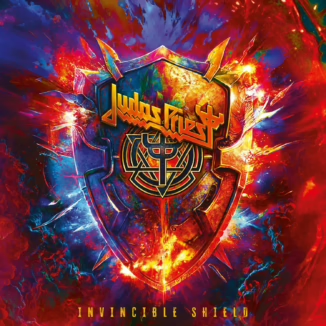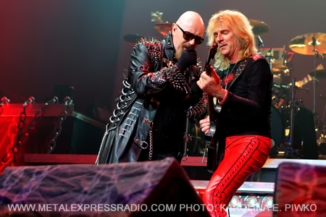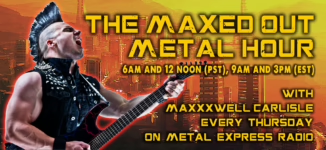
Summary
Epic – Sony
Release date: February 23, 2005
Guitars: B+
Bass: B
Percussion: A-
Vocals: A
Lyrics: B+
Recording Quality: A
Originality: B+
Overall Rating: A-
User Review
( votes)The reunification of Rob Halford with Judas Priest has caused a level of anticipation and excitement in the Heavy Metal world unlike anything experienced for quite some time. Although Priest has always been on the top of the food chain when it comes to earned respect and accolades from both fans and peers alike, the adage of “you don’t know what you’ve got until it’s gone” never was more applicable in the Metal community than from the time Halford announced his intention to leave the band to pursue an independent musical direction. As Metal flailed in popularity and lost mainstream support in the mid-1990s, Metalheadz across the globe clenched tightly onto albums such as Priest’s Sad Wings Of Destiny, British Steel, Screaming For Vengeance, and Painkiller (to name a few) as mementos of a magical time in heavy rock music … a time when quality, well-crafted Metal flowed bountifully, creatively, and with purpose. Halford’s return to the Priest nest, in a way, has created a welcomed Field Of Dreams nostalgia in the souls of die-hard Metal fans … exemplified certainly by the success of Priest’s 2004 Reunited tour – a tour hugely embraced even without the benefit of a new album to support – where Metalheadz turned out in droves to see the Metal Gods morph back into the shape and structure that had etched so many fond memories in the minds of Metal fans everywhere.
Needless to say, Halford, Glenn Tipton, and K.K. Downing knew when entering the studio to begin assembling new material for their first album together in over a decade that the fan expectations were going to be sky-high. To make things more difficult, human nature, when dealing with extended periods of elapsed time, causes these expectations to converge and nestle into personal comfort zones … in other words, many fans undoubtedly were expecting Priest’s new album to be “just like” Painkiller, or of the ilk of Defenders Of The Faith, or possibly retro’ed to a feel similar to British Steel. Yep, the pats on the back, the abundance of interviews and media shots, and the impressively attended reunion tour were all nice, but largely the impetus behind all of that was the enthusiasm behind what was yet to come from this historic band … Metalheadz everywhere, point of fact, where chomping at the bit like Ralphie from A Christmas Story on Christmas Eve, waiting for their own version of that Red Rider bee-bee gun to arrive.
So, now the wait has ended … and the operative question to address is whether or not Halford, Tipton, and Downing were able to conjure up that Metal Magic again in Angel of Retribution after so many years apart. The answer, dear Metalheadz of the world, is a resounding YES!
The album starts with a distant guitar riff that builds with power and aggression, similar in concept to the intro for “Victim of Changes,” that explodes into the opener “Judas Rising,” and establishes the beginning for the loose theme periodically running through this album, which is that the final day of reckoning is now upon us. “Judas Rising” indeed is a solid opener, and it off-hand gives the feel that Priest indeed decided to bridge right where Painkiller left off.
The album really takes shape, however, with the 2nd track, “Deal With The Devil” — a song that generally outlines Priest’s personal rise to glory and their influence on the Metal movement, with lyrics such as: “Fighting through the din and accolades/ Turn the phase around with razor blades/ Watched the movement grow – Into one voice/ Took on all the world – It had no choice”. From this point forward, it becomes pretty evident that Priest had no intent of replicating any one proven style of old. Instead, the band borrows some of what was successful in a variety of past albums, but adds a new flavor and spin to each song, making the sound come through as original and unique, yet familiar … and unmistakably Judas Priest!
Next up is the first single off of Angel Of Retribution, “Revolution,” which includes a catchy lyrical pattern, a few clever guitar tricks and stereo effects, and a hypnotic, mentally programmed chorus that certainly will have an anthem-like impact when performed live.
“Worth Fighting For” follows; a song largely driven by Ian Hill’s bass play. Here Priest establish a mid-tempo groove, a la “Desert Plains,” and mesh it together with some melancholy, reflective lyrics by Halford, resulting in a very “listenable” tune that certainly should get some air-play attention.
“Demonizer,” a high energy “Painkiller” Part II track that’s absolutely outstanding, is up 5th. Scott Travis, especially, shows why he’s regarded as one of the best Metal percussionists in the industry during this song. His foot speed on the double bass drums is indeed impressive, as are Tipton and Downing with their guitar work during the solos. Here too, Halford casts away any naysayers who may possess blasphemous thoughts that he’s no longer capable of ripping out inhuman high notes … rest assured, he is!
Implementing a Sabbath-esque riff and guitar chord pattern, up next is “Wheels Of Fire,” a tribute, of sorts, to the free-spirit nature of the biker breed, and to Priest’s own collective Metal heart that beats with incessant loyalty to the lifestyle and musical convictions that have served them so well: “Wheels of fire/ In my soul/ Wheels of fire … Let ‘em roll!” With its deliberate and heavy beat and catchy lyrics, Priest indeed have created another track that could/should enjoy air-play attention.
Totally shifting gears, Priest deliver the ballad “Angel.” Halford masterfully crafted the lyrics to create memorable imagery and reflection of a special friendship/relationship of the past, while beckoning for its most welcomed return. The acoustic nature of this song eventually gives way to a guitar-based crescendo that further elevates the emotion inherent within this song, making this one of the best performed ballads, not only in the history of Priest, but in the history of ballads over all time.
“Hellrider” takes the stage next, a song that similar to “Judas Rising” and “Demonizer,” could easily have fit on the Painkiller album. At about 6.5 minutes in length, this track offers the listener one of the more impressive musical jams on the release.
Ballad number 2 is “Eulogy,” which is a fairly short, somber, acoustic-based requiem that essentially wraps up the “day of reckoning/retribution” theme.
Last up, and shifting focus once again, Priest deliver the epic track “Lochness,” a tribute to, of all things, the Lochness Monster. At 13.5 minutes, there’s plenty of great music and guitar work in this one, and even a slowdown section similar in style to the beginning of the classic Led Zeppelin psychedelic tune “No Quarter.” Yeah, only Priest could have pulled this one off!
Overall, Priest fans of all sorts should find plenty to enjoy within Angel Of Retribution. Measuring against previous efforts, one would certainly have to place this album in the upper tier of Priest’s classics. By any standard, the 7-track stretch starting with “Deal With The Devil” and ending with “Hellrider” is arguably as good as anything Priest has ever done! The great dual attack of Tipton and Downing still sounds fresh, Hill continues to hold the songs together with his bass play, Travis shows again why he was such an important addition to the band in 1990, and, well, Halford is Halford … and further solidifies his reputation as a result of this album as not only the true voice of Judas Priest, but the most talented vocalist in the history of all of rock ‘n’ roll. As Ian Hill simply says about the return of Halford to Priest during the interview sessions with the band on the DVD side of this release, “It was meant to be.” In the end, one thing is indeed clear once again within all of Metal: There is Judas Priest, and then there are bands that wish they were Judas Priest. Job well done … again.
Note: This release also includes a DVD section, which includes about 30 minutes of concert footage from the Reunion tour of 2004, along with interview segments with the entire band describing the events surrounding the reunion, along with insights about the making of Angel Of Retribution.




Be the first to comment